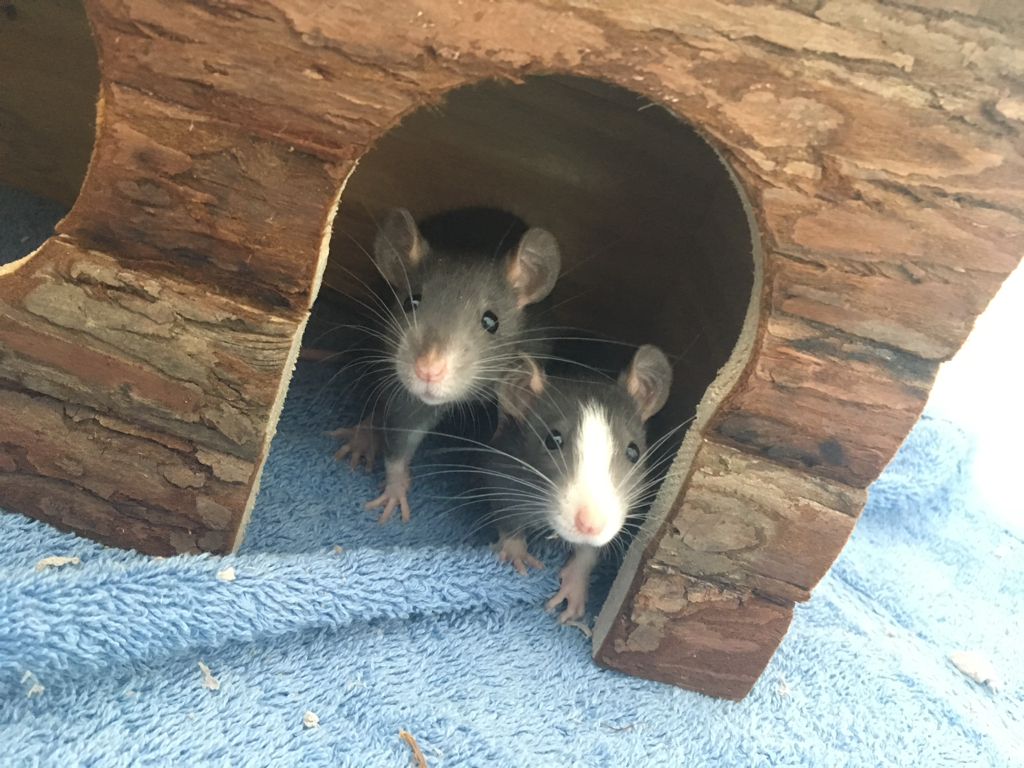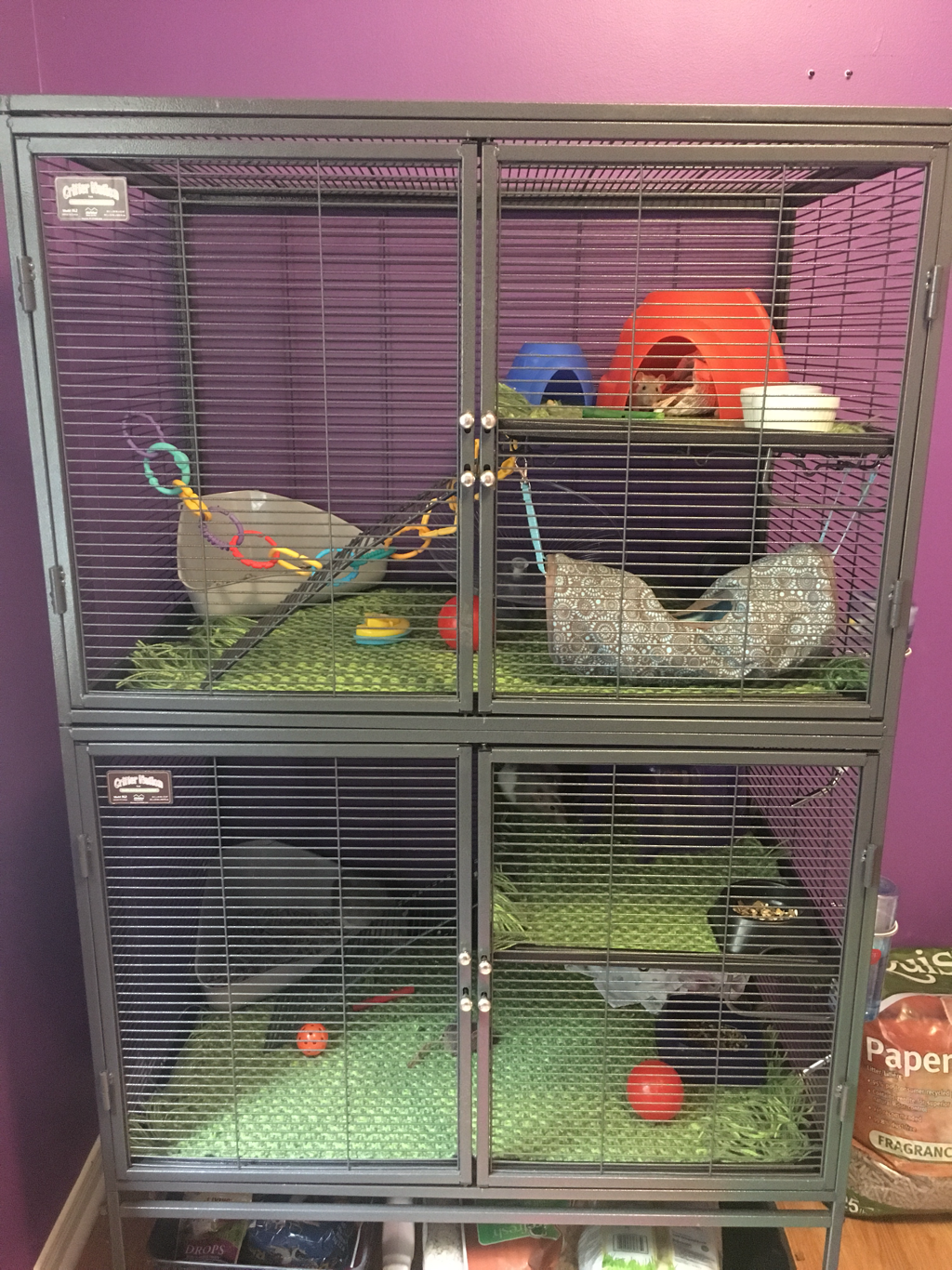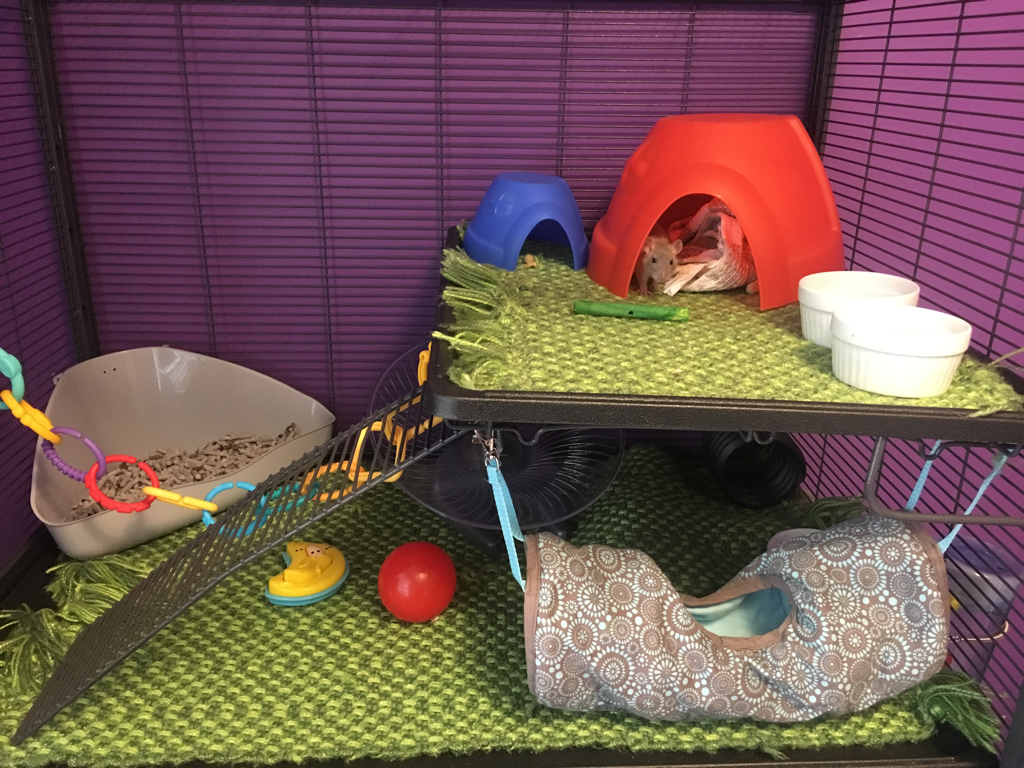Rat Care
Fancy rats are those that have traced genetic lines, and are bred in "ratteries" by knowledgeable and experienced rat owners. Fancy rats typically live to 2 or 3 years of age, and are less prone to diseases. Research your prospective breeder before purchasing your rat. The average life span of pet rats is 2 - 3 years. This is only a rough average. Some die younger, and a rare few make it past 3. Of course all of this varies depending on breeding, diet, health and environment. Our rats are bread and hand raised to have a friendly demeanor and a long life. Please read our tips for rat care below to ensure a full healthy life for your new pet.
Housing Information
Rat Diet
- Fresh/healthy/balanced diets meeting their nutritional needs; easily achieved by feeding balanced commercial pelleted diets especially for rats.
- Occasional variety. Consider supplementing diets with small amounts of fruit/vegetables/cooked egg/grains/seeds, given as part of their daily ration, not in addition or it could cause obesity/health problems. Rats are omnivores eating both plant and animal materials.
- Rat food! Don’t feed food designed for rabbits/guinea pigs/hamsters/other herbivores - they won’t meet rats’ nutritional protein needs. Rats need essential amino acids/fatty acids/vitamins/minerals from their diet - they cannot produce these themselves.
- To avoid harmful foods (e.g. onion/citrus fruits/walnuts/rhubarb/grapes/raisins/chocolate).
- To avoid sugars/high-fat foods (i.e. dairy). Use only as treats/rewards during training. Rats like sweet/fatty food, which can cause obesity/other health problems if eaten in large amounts.
- New foods introduced gradually. Introduce new food to rats as a group so individuals don’t smell different, preventing aggression. Don’t change diets overnight. Rats can be cautious/fearful of new foods.
- Natural foraging behaviours (e.g. handling/manipulating food) encouraged. They enjoy holding/manipulating food in their paws.
- To eat fresh faeces - it‘s natural behaviour helping them absorb all the nutrients/minerals they need to stay healthy. Stopping this could cause nutritional deficiencies/health problems.
- Fresh clean drinking water continuously. Without water rats become seriously ill. - Check water bottles morning and evening, refill twice daily; ensuring they’re never thirsty; - Provide water bottles not bowls to avoid contamination - clean regularly to avoid algae/bacteria build-up; - Check for blockages, ensure drinkers aren’t leaking; - Make multiple drinkers available so all can drink simultaneously, avoiding competition, ensuring that should one become blocked they still have access to water.
Vet Visits
When your rat is sick you would most likely see a red tinged secretion called porphyrin, not blood. It comes from the Harderian gland and the secretion appears around the rat's eyes and nose. It can be an indication that your rat is sick or stressed, however a little crusting around the nose and eyes occasionally is normal. When in doubt, a vet visit is in order.



